After ten hours of flying and too much bad airplane coffee, the beef carpaccio from 8 East at the Circa casino was ecstasy. Topped with potato chips, served with drops of citrus-infused wasabi crème, it would have been fabulous anytime. But nursing a cold Sapporo, stoned on exhaustion and discombobulation, I shivered in delight with every bite. Just a single piece would have been worth the flight.
It was my first time in Las Vegas — my first time in the States — and I was hoping to write a meaningful story about a too-much written about place. I’d read all the famous titles — The Green Felt Jungle, Learning from Las Vegas, Leaving Las Vegas, the James Patterson-branded What Really Happens in Vegas — Vegas in ink is a city of clichés, and I discovered that if you’re looking, they’re there.
As I walked through the Circa, heading to my room, I passed a bride running to the craps table in a wedding dress and sneakers; a group of guys in tight-fitting polos, confidently strolling in to lose money; an elderly Asian man spamming the slot machine as he filled in the New York Times crossword on his phone with his other hand. On the casino floor, there were dancing dealers in low-cut blue outfits, a 165-foot “megabar,” a neon cowgirl sign, and Vegas’s trademark blackout curtains to ward off the dawn. Playing over it all, 2010s pop: It’s all about the money, money, money.
But Vegas clichés show only one of its faces. Paris asserts itself as Parisian, Bangkok can’t be anywhere else. Vegas is a mirror, or prism, that changes depending on what you want from it. It’s a jackpot for gamblers, a theater for couples, a theme park for families, a watering hole for boozers, an endless buffet for foodies. Writing about it is like trying to summarize Instagram by reviewing your own feed. As a local put it, “Everyone who visits Vegas is the protagonist.” I ended that first night sipping Champagne on the Circa’s rooftop bar. There’s an astonishing view through the glass railing. Fremont Street, or Glitter Gulch, the birthplace of Vegas neon, glows below. Trailing headlights snake along Interstate 15. Surrounding us is a sea of orange and blue lights; ahead is the bold, strange outline of the Strip.
More than the view, I was struck by the sound. The city’s ambient sounds echo around you; distant footfall and music, the chopper overhead (there always is), dance tunes drifting from nearby speakers, taxis whizzing along the freeway. It’s a soft cacophony, the unintentional atmospheric jazz of Las Vegas.
That first night was a constant daze, floating from the world’s biggest sports book to rooftop bar and hotel suite. At the time, I thought it must be the jetlag, but the strange buzz that makes everything brighter and louder and more colorful lasted the whole trip. Vegas is about the buzz.
The next morning was warm and bright, and with brunch planned in the Arts District, half an hour or so from the Circa, I threw on my biker jacket and walked.
Aside from a few businessmen talking into phones, and homeless people sleeping in the sun, it was quiet. Daylight hours in Vegas are like the off-season in a tropical holiday spot. Everything is dormant, with a few construction trucks trundling past and the occasional worker starting to prepare for the tourists.
Until recently, I would have been greeted on my walk by nothing but dusty garages and a few antique stores. But Vegas changes quickly. Today, its Arts District is a thriving spot, with cafés, restaurants, breweries and bars, far from the tourist kitsch of the Strip and Downtown. There’s a woman-owned skate shop, a rockabilly hair salon, the JRNY NFT art gallery — “Where Physical and Digital Worlds Collide”— and a café that hires individuals with disabilities, Dig It! On the corner of South Main and East California, a man in a yellow cap and jean jacket plays saxophone, and a few doors down is my brunch spot, Esther’s Kitchen. Its founder James Trees escaped the high rents of LA and sought to make a restaurant in his hometown, catering not to the transient Strip crowd but to locals, with a focus on quality cooking over flashy gimmicks. The food — seasonal Italian cuisine, inspired by the cooking Trees grew up with — is a nostalgic fantasy of home cooking, with beautiful sourdough and burrata to start, perfect Rigatoni Carbonara (all pastas are made in house), and an incredible mezcal cocktail on crushed ice. The place is decorated in a rustic, homey way and some of the staff wear its merch, including a fitted Dodgers cap — for Chef Tree’s favorite team — but with his signature asparagus graphic on the side.
A few weeks after I left, it moved to a larger space, two doors up, but that original location was a landmark: one of the core founding places of this new part of Vegas. It’s historic. It opened all the way back in 2018.
In June 1955, Life magazine ran a cover story titled “Las Vegas — Is Boom Overextended?” which observed that “the preparation for the boom had been stupendous. Three hotels, costing a total of $15 million, had already opened in the spring.” The writer noted luxurious amenities such as air-conditioned rooms and “oddly shaped swimming pools.” Almost seventy years later, the piece has become a bit of a joke: the boom has never stopped.
After checking out of the Circa, I stayed at the latest, tallest, biggest hotel in Vegas, the Fontainebleau, at the north end of the Strip. Its development was a hellish sixteen-year-long process which included a recession and foreclosure; it was resurrected and opened last year. It contains enormous art pieces, nearly 130 table games, 1,300 slot machines, thirty-six restaurants and bars, shops for every luxury house you can name, over half a million square feet in convention space and a nightclub. The project cost $3.7 billion. It’s bordered by a large empty square patch of dirt, ready for someone else to build on.
Las Vegas was an accident, a stopover on the railroad between Los Angeles and Salt Lake City, where men could drink and gamble. In the 1920s it became a place for golden-era actresses to drive away from the facade of LA; for working people to escape the drudgery of a nine-to-five and to find uncertainty in a sports book. It was a place to be someone different for a weekend; to be glamorous.
When Prohibition ended, gangsters needed new income streams and new ways to wash their money; the City of Sin was the perfect choice. It’s incidental that the best accounting of Vegas history can be had at the (fabulous) Mob Museum. It’s built in the old Las Vegas Post Office and Courthouse, and part of the exhibition has you sitting in the courtroom where, in 1950, mob asso- ciates were interrogated by the Kefauver Committee.
The boutique shopping center Downtown Container Park has bars and clothing stores — all local businesses operating out of stacked, refurbished shipping containers — but it’s centered around a large treehouse play area for children, which families can access for free until 9 p.m. It also has a giant Burning Man-style praying mantis outside, intermittently spouting fire to the expletive-laden surprise of passing pedestrians.
It can be hard to live in a city that’s constantly changing. Marcus has driven his cab there for twenty-two years and used to grocery shop in the wee hours at the end of his shift. But after Covid, unlike casinos, few stores stay open 24/7. Las Vegas is one of the few cities in America where property prices are declining, and there’s a strong local outdoors culture among hospitality workers, who ski, hike, mountain bike or play hockey to get away.
The city’s tourism industry is embracing this love of sports, local or imported, with international sporting events now big business. Capitalizing on the popularity of the TV series Drive to Survive, Vegas hosted its first F1 Grand Prix last year; and earlier this year, hosted a well-attended date between Taylor Swift and her boyfriend at the Allegiant Stadium.
Vegas is one of the great food cities. It doesn’t have a local cuisine but that doesn’t matter. It has everything. If you’ve visited a beautiful restaurant in a major city, chances are that its second location is in a Vegas casino.
Beyond the fresh homemade Italian of Esther’s Kitchen, there’s the incredible Asian fusion of 8 East, and some of the best cocktails I’ve ever had at the whisky cocktail bar, Oak & Ivy. There is classic seafood paella at Julian Serrano Tapas and an impeccable Butter Cake at Mastro’s Ocean Club; the beautiful breakfast bowl and tequila-espresso martini at Mexican-brunch spot Chica; and the garlic escargot, warm prawns, lamb cutlets, and bruschetta- adjacent “tomatini” cocktail of the indulgent Côte d’Azur restaurant LPM, whose cocktail menu was inspired by Jean Cocteau.
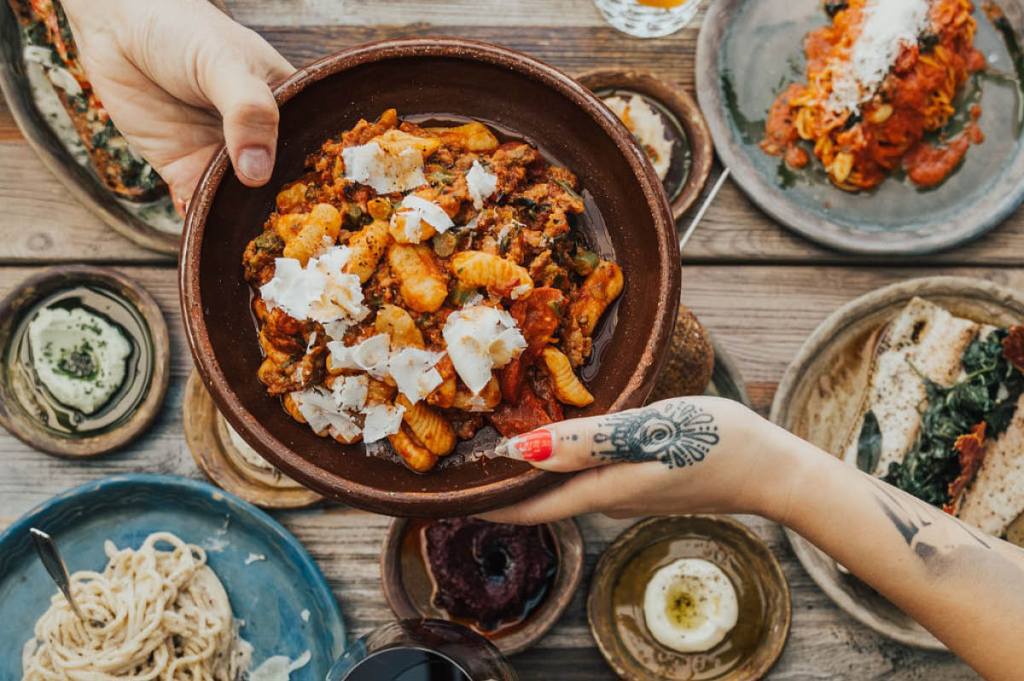
If you lived like Elvis or Howard Hughes, stuck in a Vegas penthouse, you’d get used to breakfasts at La Fontaine, having their Eggs Royale and Verde juice and macchiato with sugar sticks every morning. But I’m not; I’ve never had a more perfect breakfast.
I end my second night in Vegas full of tater tots and too many cocktails from the Golden Tiki, popular with local hospitality workers, decorated with an assortment of “real artifacts and fake artifacts,” as Gladstone put it. It’s a lot like its city: decorated with faux-vintage signs but a lot of character.
Though Las Vegas is always changing — upgrading — improving — a lot of its old sleaze can’t quite be scrubbed away. Out the window of my taxi to the Aria casino, signs read “Erotic Heritage Museum” and “Deja Vu’s Love Boutique.” One notes the availability of a free taxi drive to Spearmint Rhino, “A different kind of Gentleman’s Club,” apparently. Down the block a store sells shorts that say “Daddy’s Little Slut” in a classic Old West font, and I’m passed by a mobile truck billboard touting “girlsdirecttoyou.com.” The taxi drivers hate these trucks; they slow down traffic. On the back of the cubicle doors in the Venetian’s men’s room are notices alerting you to watch out for signs of human trafficking.
I was told several times that Downtown’s Fremont Street had improved in recent years. Stepping onto it, I pass two shirtless women in partial “police uniforms,” star-spangled stickers covering their nipples and “Las Vegas” written on their thongs. A man runs up to get a picture with them. A child flies past above on a zipline, screaming joyously.
Fremont Street is a sensory carnival. Everything’s bathed in saturated color, every surface tries to sell you something, every light flashes neon. There are performers and mascots and hot young topless people looking for tips, a Michael Jackson impersonator, an amateur bass player; golden casino foyers and green vape shops and various stands selling tasteful novelty T-shirts (“I’m not gay but my boyfriend is,” Trump’s fake mugshot captioned “Legend”).
It’s an overwhelming place. And it’s the only place I went out of my way to return to, just to experience walking down the street again. It’s so shamelessly over the top and transactional that it’s refreshingly honest. Look long enough and you’ll see glimpses of humanity beneath it all.
Since the beginning, Vegas has been shaped by its casino-hotels, most of them on the nearly five miles of the Strip. The first thirteen casinos were branded with desert imagery until Caesar’s Palace changed that in 1966 with faux-Roman statues and columns. Its shopping area is mind-boggling, with splashing fountains and permanent golden light. When I was there Andy Warhol’s “Lenin” and” Mao” were on display in its gallery, right across from Urban Necessities, reselling Louis Vuitton Air Force 1 shoes for $15,000. A taxi driver told me Caesar’s was dealing with a bedbug problem.
Over the years more casinos have popped up than you can name, all with their own styles and gimmicks. There’s the Mirage, the Bellagio, the Cosmopolitan, Red Rock, Horseshoe, Main Street Station and the Flamingo; the Ancient Egyptian Luxor, the Encore Beach Club at the Wynn, the self-explanatory Circus Circus, New York New York, Paris Las Vegas and Treasure Island, which doesn’t look as piratical as you might expect. The only constants are the black Escalades and white Rolls-Royce Wraiths parked outside.
With its huge sports book, large unused screen-shaded pool and rooftop bar, the Circa feels like an out-of-season Miami hotel. The Fontainebleau is like an enormous luxury spa, a place for the affluent to bathe and shop and dine. The Cosmopolitan is a place to be seen; the Venetian, with its gondola-filled canals, is a place to see. The Aria aspires to be something other than it is.
From the long line outside its Hermès store and the art displayed near the doors you’d be fooled into thinking the Aria was an elegant, sophisticated casino. But on the floor, the waitresses wear grimaces with their low-cut sparkling tops, its dealers are in burnt-lavender shirts and women float around offering neck massages to gamblers. Of all the casinos I visited, it had the largest average age gap in couples, and nowhere had more young women in newly bought skimpy dresses they weren’t quite comfortable in.
Returning downtown on Friday night, I stopped by El Cortez, the oldest continuously running casino in town. It’s changed little since it was remodeled in 1952. It’s old, unglamorous and honest. In 2021, it opened its first high-limit room, but still hasn’t really found a high-limit crowd. Its gamblers are working and older people. The sportsbook is a series of normal TVs and grandparents in black leather recliners.
The Vegas skyline has no organizing aesthetic principle other than “what will stand out?” Among its most iconic shapes is also its newest, the Sphere. Built over five years for $2.3 billion, the enormous orb is made of 580,000 square feet of LED displays, and contains within it a large, 16K-resolution wraparound screen, for wild concert visuals and a faux-3D film experience. Passing security and a robot display, I sat down to watch Darren Aronofsky’s Postcard from Earth, a beautifully shot film of incredible drone and wildlife footage, strung together with a corny plot about human involvement causing the destruction of the planet. As a top Letterboxd review notes, it’s a “very jarring experience to view this immersive love letter to planet Earth and then exit onto the streets of Las Vegas.”
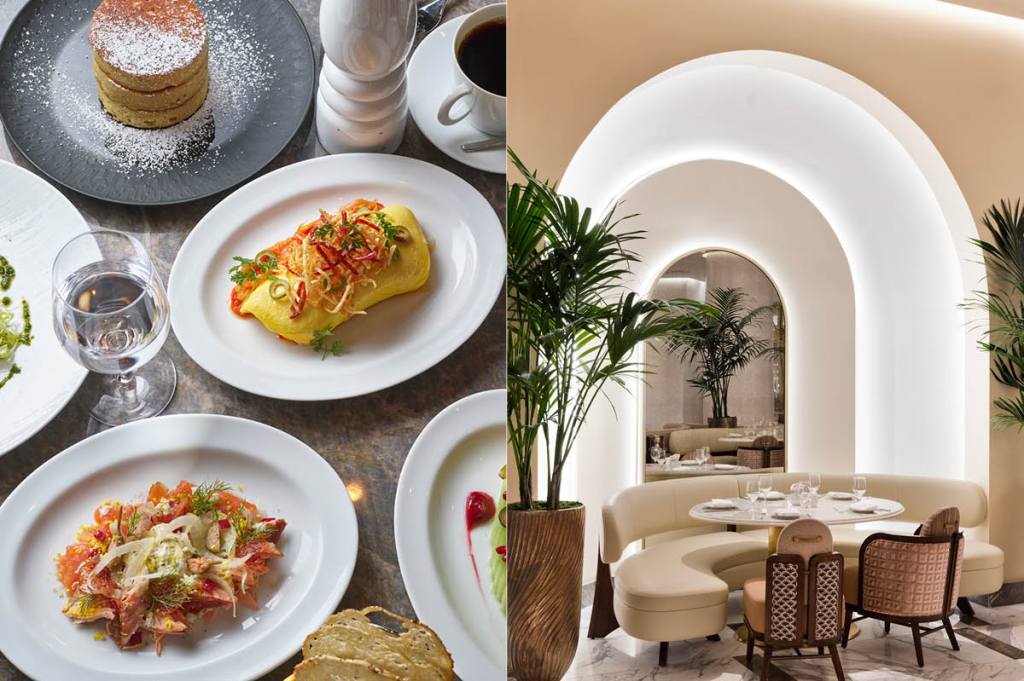
But my favorite thing in Vegas was something smaller and more sincere. It was a couple, just married, stepping out of a stretch Cadillac Eldorado hearse at the Cosmopolitan. She — with full sleeves of tattoo and dark eye shadow — was wearing a black gothic wedding dress. Her new husband had his dreads out, a competing covering of ink and a black pinstriped suit.
Anywhere else, a wedding like this would have been too much, attention-seeking, ostentatious, meant to cause a stir. But this is Vegas. Here, they were just two people in love.
Vegas is best taken in small doses. The morning I was to leave, sitting in the appropriately named Bacchanal Buffet at Caesar’s Palace — surrounded by cakes and prawns and crab and brisket and ramen and pasta, and endless displays of delicious food — I felt nauseated and overwhelmed.
But the night before, walking along the Saturday night Strip, there was nowhere on earth I’d rather have been.
It’s joyous and glamorous and ironic — extravagant but aware it’s all just a laugh. It’s not just easy to fall in love in Vegas. It’s easy to fall in love with Vegas.
This article was originally published in The Spectator’s June 2024 World edition.



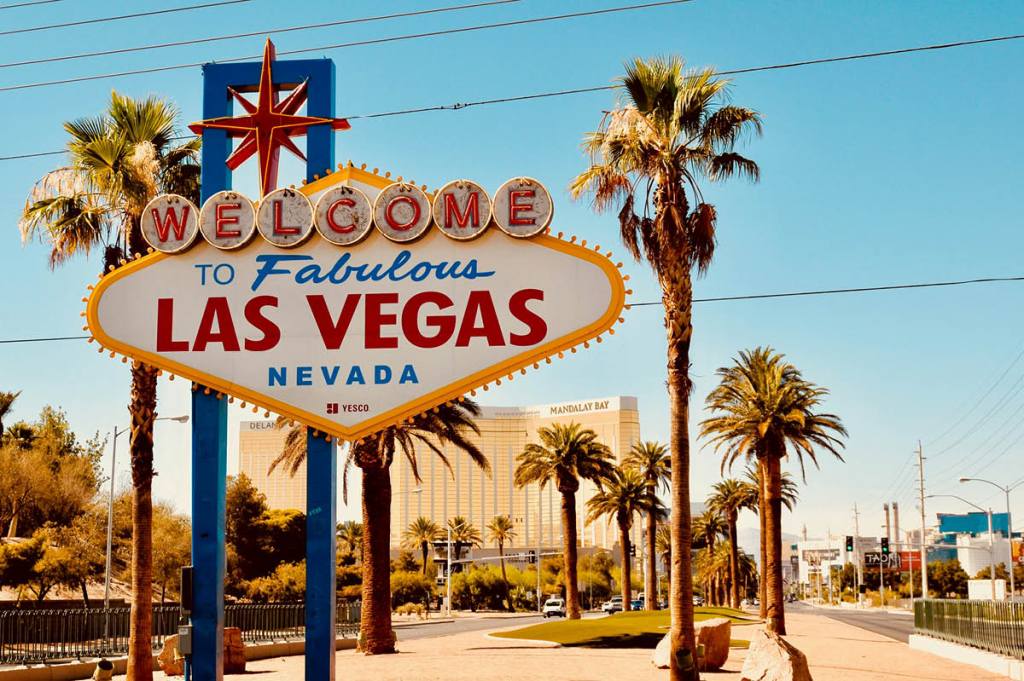






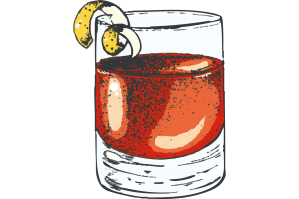
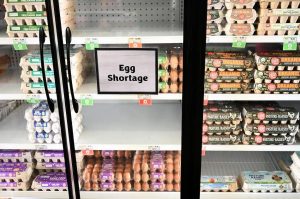
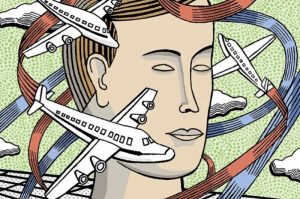
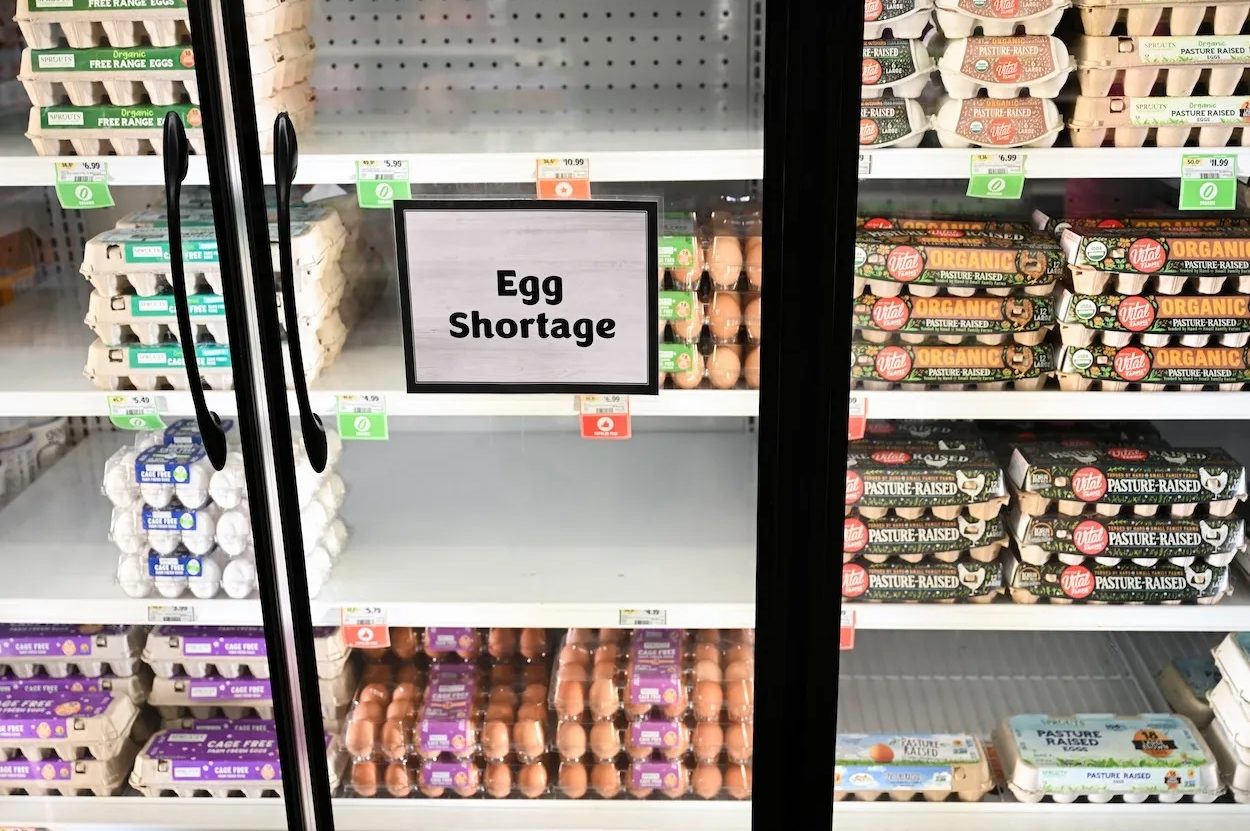


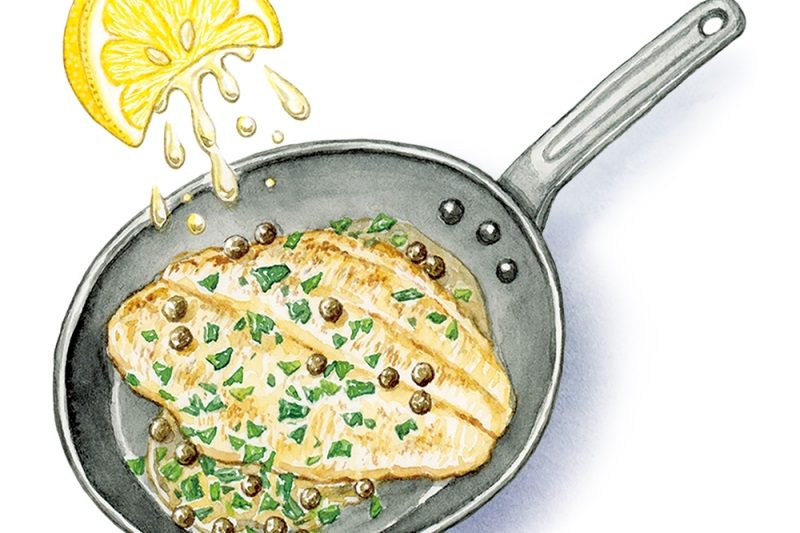
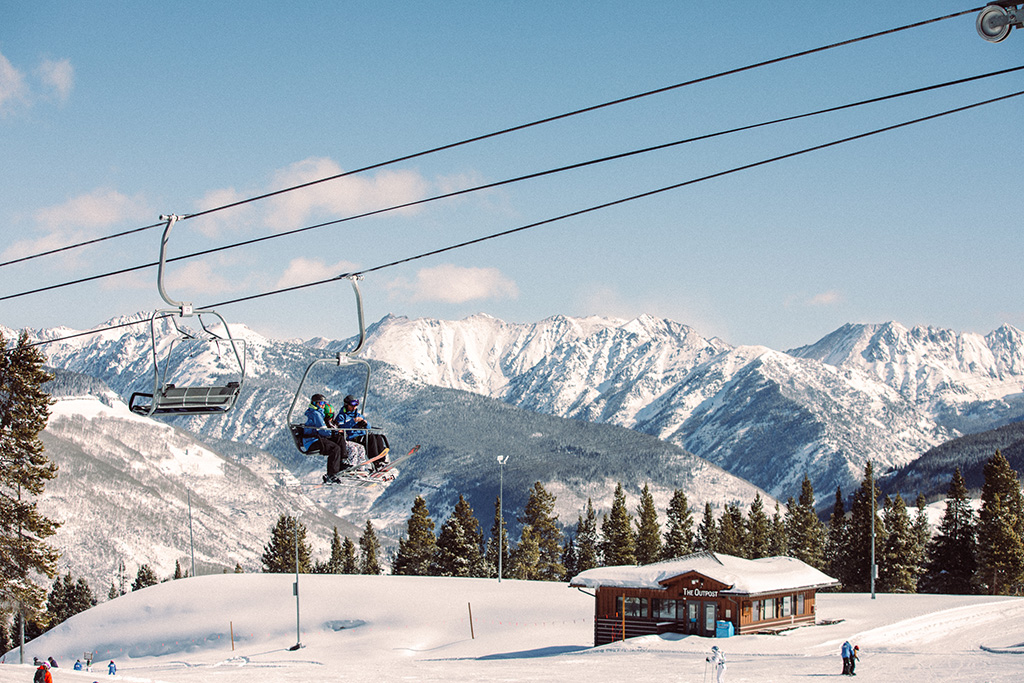
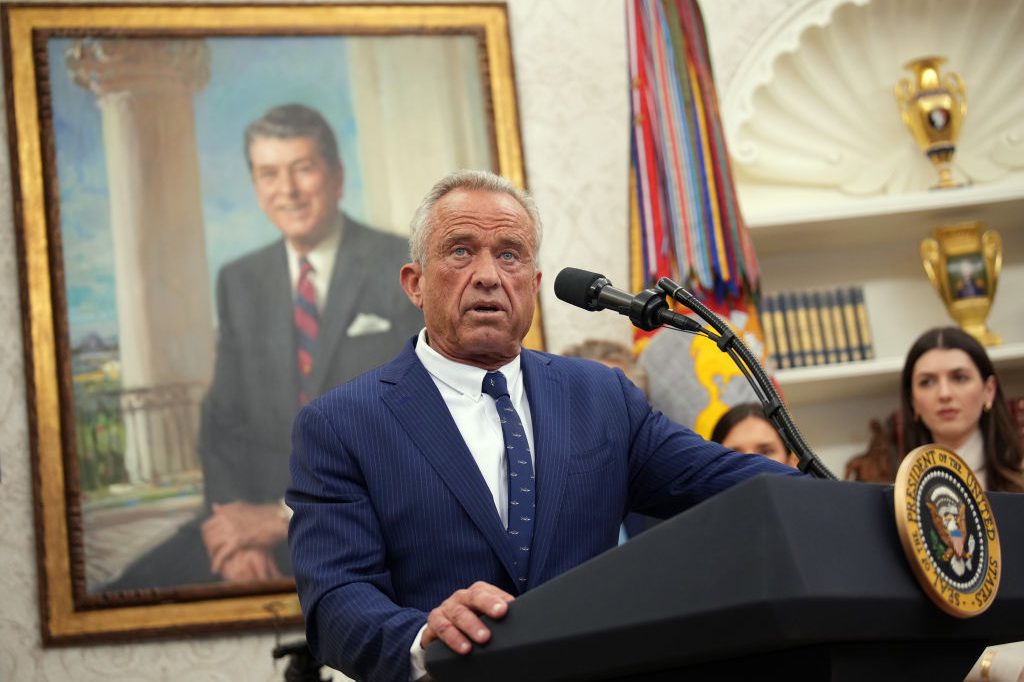







Leave a Reply